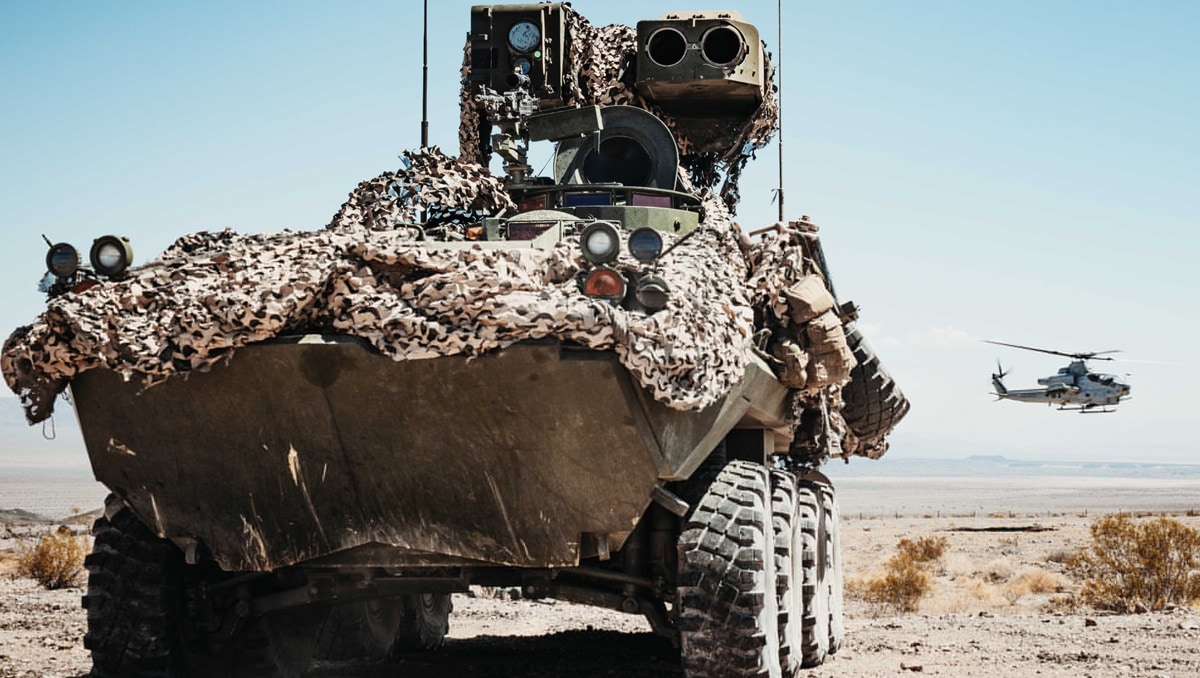
When former Commandant of the Marine Corps Gen. David Berger unveiled his radical new vision for the Corps in 2019, many in the administration and Congress hailed it as a bold step toward confronting China. Berger’s Force Design vision was to place small groups of Marines armed with anti-ship missiles on islets and shoals in the South China Sea where Malaysia, Vietnam, and the Philippines have territory. The same territory is now claimed by China.
The commandant believed that the U.S. Marine Corps had wandered from its traditional mission and legal directive to conduct amphibious operations in support of naval campaigns. Berger was concerned that 20 years of land warfare in Iraq and Afghanistan had reintroduced the “second land army” stigma that followed the Corps after World War II and Vietnam. He wanted to get the Marines back to their naval roots and prepared for conflict on small islands in the Indo-Pacific region.
In order to pay for the anti-ship missiles and associated sensors needed to implement Force Design, Berger divested the Marine Corps of all its tanks, heavy engineering equipment, much of its cannon artillery, and numerous combat aviation capabilities. In addition, Berger dropped the number of amphibious ships the Navy was required to maintain from 38 to 31, reducing the fleet by nearly 20 percent.
In a perfect world, this might still be enough to keep a nimble, sea-based presence in the three most dangerous global hotspots — the Mediterranean, the Persian Gulf, and the Western Pacific — but this is not a perfect world.
The Navy’s current atrocious repair and maintenance capabilities have reduced amphibious readiness rates to just 40 percent.
We now have only about 12 amphibious ships operational worldwide at any given time. Berger shifted resources away from these capabilities in order for the Navy to build a new class of shallow draft vessels called Landing Ship Medium. These new vessels would, theoretically, resupply the Marines across small, widely scattered island garrisons.
Interestingly, independent war-games conducted by the Center for Strategic and International Studies have determined that Force Design would be of marginal use in a war with China over Taiwan. Despite these lackluster findings, Berger’s successor, Commandant of the Marine Corps Gen. Eric Smith has doubled down on Force Design. Smith’s steadfast devotion to Force Design ignores the advice from all eight of his and Berger’s living predecessors, as well as the former four-star Marine Corps theater commanders.
Worse yet, not one of the nations potentially in danger from China, which was the catalyst for this redesign of the Corps, has signed on to the concept. Even the Philippines, the U.S.’s closest ally in the region, has told us that it will not allow U.S. forces to use its territory as a staging base in a conflict with China over Taiwan — much less staging offensive missiles. (RELATED: China Attempts to Intimidate Philippines with ‘Monster’ Coast Guard Ship)
Apparently, Berger created a product that has no market.
Military leadership is not solely responsible for this mess. Ultimately, Congress and the president have oversight. Civilian control of the military assumes that the civilians should know something about the military, or at least hire people that do. As with Afghanistan and naval readiness, the Biden administration and Congress have failed in that basic function. If you are a member of Congress from East Cupcake, Indiana, with no knowledge of military affairs, and are told by a service chief that he will reduce his force structure, save money, and still confront the Chinese, what’s not to like?
But the recent Congressional Research Service report should jolt both into action because the nation has lost key capabilities that Americans, rightfully, assume the Navy and Marine Corps possess.
They can no longer perform large peacetime sea-based contingencies like the 1975 evacuation of Saigon. They cannot execute large humanitarian operations such as the 1991 Sea Angel effort in Bangladesh or the 2005 response to the devastating earthquake and subsequent tsunami in the Pacific and Indian Oceans.
They cannot conduct brigade-sized amphibious operations, much less division-sized assaults similar to Guadalcanal, Tarawa, and Inchon. Even worse, the Corps can no longer be a meaningful participant in major regional conflicts such as Desert Storm and Iraqi Freedom — it lacks the tanks, armored personnel carriers, and heavy engineering assets that broke through Iraqi lines in both conflicts.
In the half decade since the launch of Force Design, not one Marine Corps missile unit is operational and not a single Landing Ship Medium has been launched. Essentially, the nation has lost its emergency response force and traded it for no additional gains in capability elsewhere.
By the end of his tenure in 2023, for the first time in history, Berger had to tell the president and secretary of defense that the Marine Corps could NOT respond to missions in the NATO and African command regions.
The bottom line: the Navy can no longer perform the same functions that they have for the last 85 years.
There are two types of incompetents, active and passive. Active incompetents don’t know they are incompetent. They are dangerous because they don’t know they are incompetent. They are dangerous because they act on the zany ideas. Passive incompetents know that they don’t know what they are doing. They are dangerous because they tend to defer to the active incompetents.
Berger and Smith are active incompetents. Biden and Congress have been passive incompetents. Shame on them. If Congress acted today to repair the Navy and Marine Corps and return it back to 2018 capabilities, it would take at least a decade to recover. Our civilian leaders were sold snake oil, and the rubes bought it.
Gary Anderson is a retired Marine Corps Colonel. He retired as Chief of Staff of the Marine Corps Warfighting Lab and served as a Special Advisor to the Deputy Secretary of Defense